What do they rely on in the Armed Forces of Ukraine
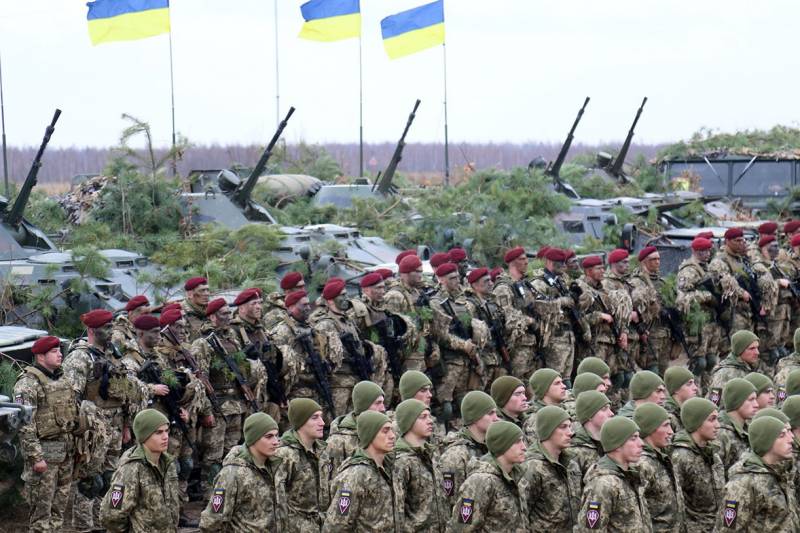
Considering how events are developing, how they scare us all with this very counter-offensive (although why is it “counter”? We didn’t seem to be advancing anywhere, it’s a pure position). However, only a fool will dismiss the issue of possible attempts by the Armed Forces of Ukraine to return what is theirs and go further. Of course, these attempts will be, the whole question is their effectiveness.
And it is about that very efficiency that it is worth talking now. Because it will be the key to the success or failure of the upcoming summer campaign.
It's worth starting with defense. In general, everything starts with it, in no country you will find the ministry of attack, but there is a ministry of defense in any self-respecting country. Even in the Baltic formations, and in them - in particular.
Defense
From which all attacks begin.
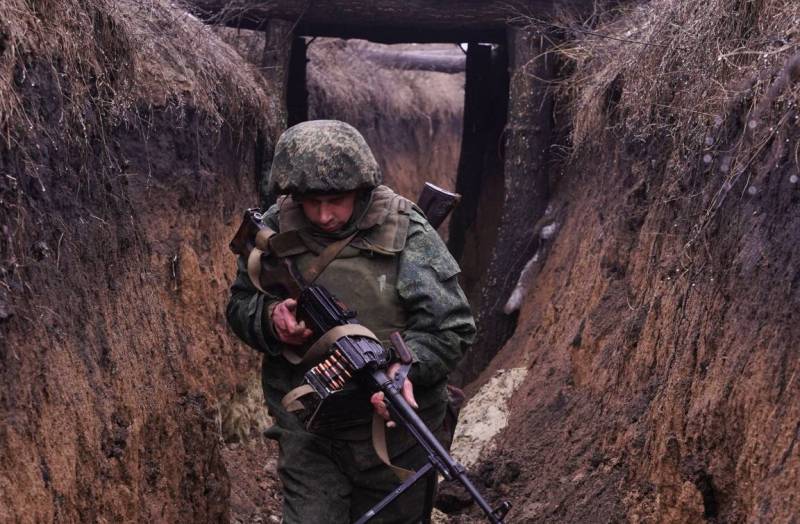
It is difficult to say how many years such a principle has existed, but any defense stands on four pillars, to which not so long ago, a hundred years ago, a fifth was added.
1. Personnel in the form of commanders of the middle and senior levels, tactically competent and able to organize both defensive actions and counter-offensive or offensive.
2. Intelligence. Knowing more about the enemy than he knows about you is the key to successful actions both on the defensive and on the offensive.
3. Communication. What provides quick leadership of troops for command and interaction of different types of troops and different units during the battle.
4. Artillery. This also includes MLRS and tactical missiles. That which inflicts damage on the enemy and ensures the advancement of his troops forward.
5. Aviation. Yes, as practice has shown, it is also possible to fight practically without it, but in fact a lot depends on aviation, because now it is not only reconnaissance and attack. It is aviation support that can guarantee successful defense operations, since aircraft are more mobile weapons capable of inflicting damage on the enemy in all echelons of his defense, moreover, doing this more quickly than the same missile systems.
If all this takes place, and plus there is a defense in depth with lined up fortified lanes, and there is a reserve in the form of armored vehicles that can plug holes in the defense, it will be very difficult for the enemy to break such a defense.
Today, the Armed Forces of Ukraine have four out of five points. There are middle-level commanders, they could not help but grow up during such a time of waging a war. Top-level commanders planning tactical operations... But who said that they must necessarily be Ukrainians? The British, Americans and Poles are pretty good at this.
Intelligence is also very worthy, crowds of Ukrainian drones, hovering over Russian positions, provide a sufficient amount of information “on the ground”, and what requires a wider view is provided by NATO AWACS aircraft and American military satellites.
Moreover, the point about communication immediately comes into play, since the exchange of data takes place simply instantly, and the commanders on the ground have everything in order to make a decision about their actions.
But the communication itself in the Armed Forces of Ukraine is set up by the NATO allies at the proper level and is obviously better than the Baofengs of the Russian army, which operate in the civilian range without encryption from the word “absolutely”.
Artillery - everything is very complicated here, because the Armed Forces of Ukraine do not have such a number of barrels as the Russian army, but there is a small (comparatively) number of more accurate and long-range howitzers received from NATO. And these weapons, being concentrated in one place, will be able to influence the situation. In addition, the Armed Forces of Ukraine have at their disposal complexes of the Hymars family, which have already shown their super-efficiency.
Aviation is the weak point of the Armed Forces of Ukraine. But the sky above the front line is generally quiet, the use of aviation is hampered by air defense systems on both sides of the front. So really, 4+1.
But nevertheless, the defense is built, and it works. However, we are more interested in what will begin from the very moment when the transition from defense to offensive occurs.
Offensive
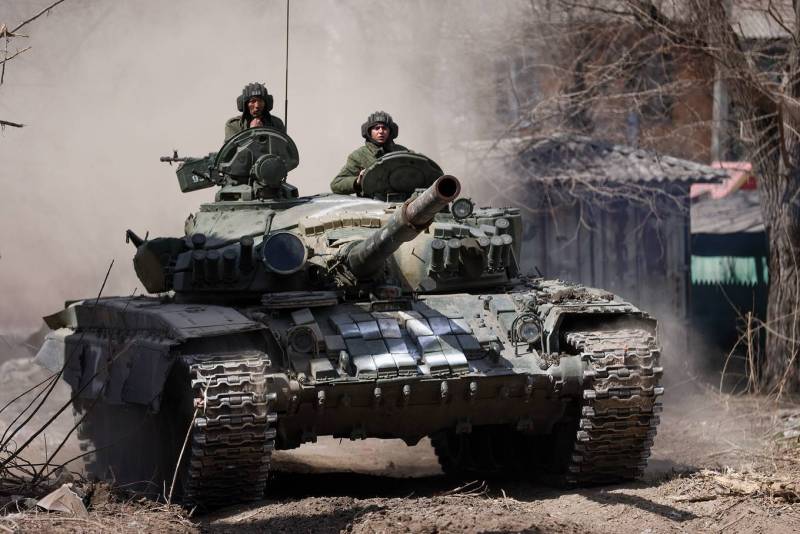
Offensive is even more complex than defense, which consists of several phases.
1. Preparation. This, of course, is pulling up reserves, creating superiority, artillery barrels, and so on.
2. Breakthrough of the enemy's defense. Strikes from everything that is possible on enemy positions and rear facilities and the offensive itself. At which, we note, the attacking side suffers more losses than the defending side. On the contrary, all these 8 to 1 for the advancing are cynical fairy tales for children and retired believers. The enemy, being in well-equipped positions (and he is interested in this), with spares behind him, will do his best to thin out the ranks of the attackers and knock out equipment.
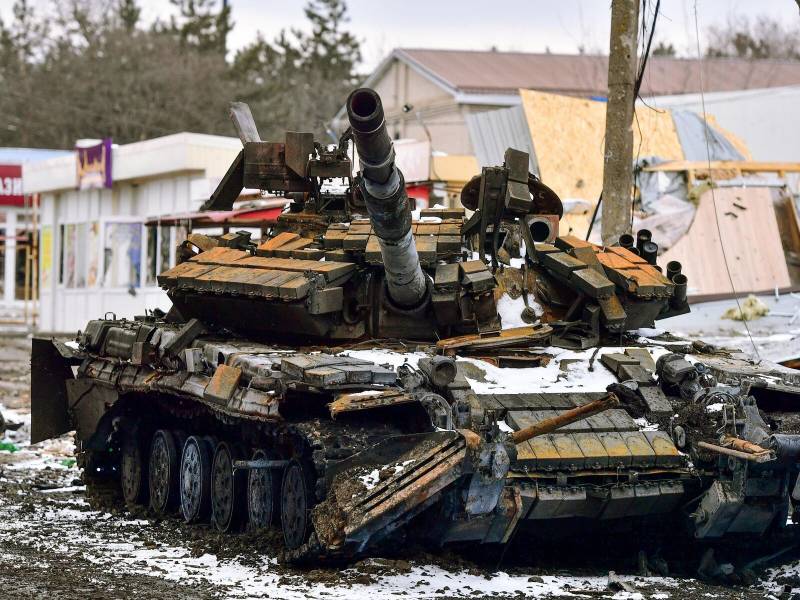
When breakthroughs are successful, then “boilers” are realized, in which the most valuable thing turns out - trained personnel. Not equipment, not ammunition, the most important thing is people. And it is precisely the death of personnel in the encirclement that is the main success of the entire operation. Even leaving heavy equipment, but leaving the "cauldron", the saved personnel then simply continue to do their job.
The best example here is Azov. Surrounded, partially knocked out, surrendered, but then the released personnel returned - and here you have the Azov brigade.
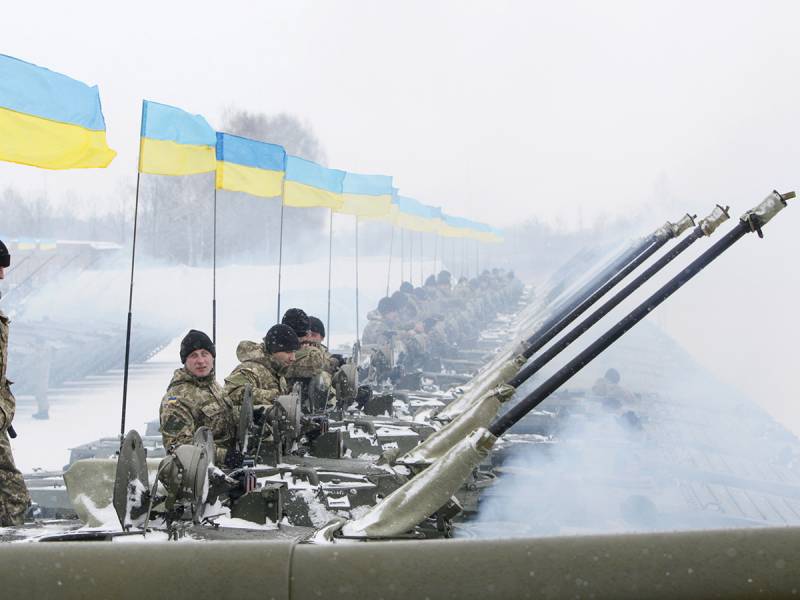
If the defender manages to withdraw troops from the "cauldron" by abandoning heavy equipment, the results of the operation become doubtful, because you have laid down your personnel, and the enemy retreated to previously prepared positions, inflicting maximum damage on you. In personnel.
What will the capture of Artyomovsk mean now?
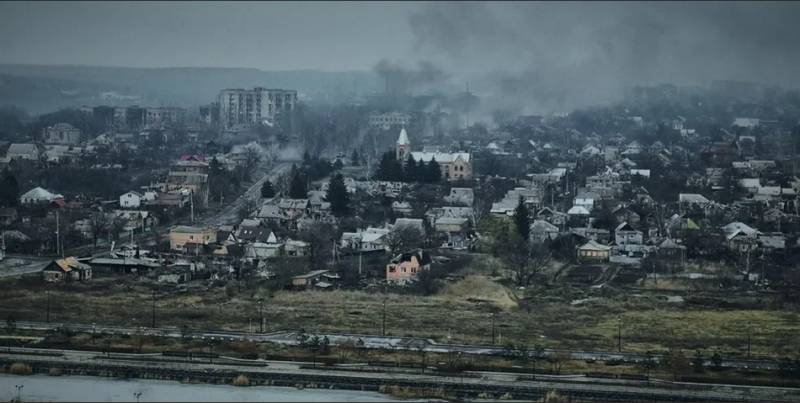
Only that American strategists will give the command to retreat. There is no encirclement, there is a displacement of Ukrainian troops, and therefore they will leave quietly, not like in Ilovaisk they left the "boiler" in their time. Classically, the command of the Armed Forces of Ukraine, led by experienced advisers, withdraws the most significant units, and the task of the rest is precisely to cover, that is, to give their own the opportunity to leave and stand on ...
Yes, but where do you stand? What's next, after Artemovsk? And further on the map Kramatorsk-Slavic fortified area. Moreover, they worked on it for more than one year and exhausted more than one hundred trucks with concrete.
Result? Obvious. Artemovsk/Bakhmut is no longer a city, it's a pile of ruins, no value. And it will not be very easy to defend in it, under certain circumstances. Worse, let's say, than in Kramatorsk and Slavyansk, with bakeries and hospitals behind.
Of course, sooner or later, units of the Armed Forces of Ukraine will be forced out of Artemovsk. But exactly what will be forced out, yes, with heavy battles, overcoming, but there will be no “cauldron” with the subsequent destruction of the most valuable. As for the equipment... NATO will bring new ones, they won't go anywhere.
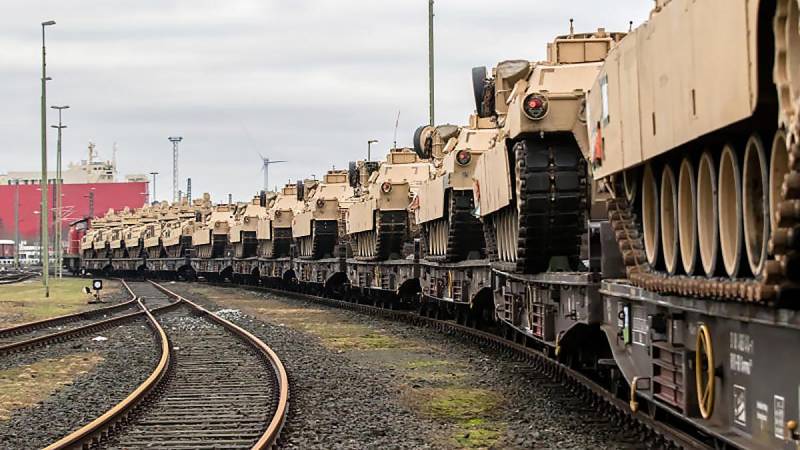
It is clear that a detour maneuver is from the realm of fantasy, because everything is viewed by drones for tens of kilometers, the satellite is played tricks in orbit, and all detours are reliably bombarded with mines.
Therefore, one thing remains: to storm in the forehead. It is obviously too difficult to develop a different way to solve the problem, the single-tasking method dominates here, and therefore the Ukrainians use this, arranging the “loosening” of the defense line. That is, taking advantage of the full advantage in intelligence, organizing harassment strikes in different directions, with one goal - not to show where a serious blow will actually be delivered.
Two different approaches: the Russian method of pressure, which uses a large number of personnel, and the Ukrainian one, when the commanders of the Armed Forces of Ukraine try to carry out maneuvering actions that give a different ratio of losses. The Armed Forces of Ukraine simply cannot afford to lose a lot of manpower, the mobilization reserve is not the same.
But even the mobile reserve is easier for the Ukrainian side to use. They have only two types of formations, directly parts of the Armed Forces of Ukraine and parts of the Teroborona. All. The time of dashing formations at the beginning of the ATO has passed, and all volunteer battalions have slowly divided the Armed Forces of Ukraine and the Ministry of Internal Affairs, which controls the Territorial Defense, among themselves.
Everything is more complicated for the Russian side. I have already written on the topic of interlacing, I will briefly repeat: today, what is fighting against the Armed Forces of Ukraine looks rather motley. Let's look at this:
- personnel units, with combat experience, trained in the LDNR, were released to participate in offensive operations, as they were really the most trained in combat terms;
- in their place came the fighters called up for mobilization in the LDNR, whose level of training was much lower. But most importantly, the level of training of junior and middle command staff was also lower. How much these measures weakened the defense is a question;
- in part of the Russian army and the People's Militia of the LDNR, battalions of BARS began to attach. We wrote about it. These are the best units in terms of morale, but their equipment did not leave much to be desired - in the best scenario, the only heavy weapons were mortars. Armored vehicles were issued absolutely randomly, as well as the command staff. But nevertheless, the BARS earned the well-deserved respect;
- for some reason, units of the National Guard, the Ministry of Internal Affairs, Chechen battalions were involved. Yes, Akhmat is indeed a force, but: there was no combined arms training because it was completely unnecessary, and therefore all successes are solely due to personal qualities;
- various departmental special forces and a cherry on the cake - PMCs.
All this gave a colorful patchwork quilt, which was very easily torn and did not stretch well. That is, there was a violation of paragraph 3: it was impossible to manage normally in real time such a structure from various formations with the level of culture of combat operations available in the RF Armed Forces. And speaking specifically about communication - and even more so, given the difference in frequencies of even existing radio stations.
In general, the SVO has already shown that a crowd of randomly assembled and poorly trained people with machine guns is of absolutely no combat value against the backdrop of well-coordinated and well-controlled formations with heavy weapons and armored vehicles.
What can I say, in 2014, the Armed Forces of Ukraine acted exactly like this: driven mobilized, volunteer battalions rushed into battle, assembled precisely “on the knee” and armed in much the same way.
It was surprising how yesterday's miners and merchants beat them and beat them very successfully. Albeit with the participation of advisers. Yes, the successes of the militia gave reason to say that the Russian army was fighting instead of the militia, but even the Armed Forces of Ukraine knew perfectly well that this was far from the case. And they drew conclusions. First of all, regarding organization and preparation.
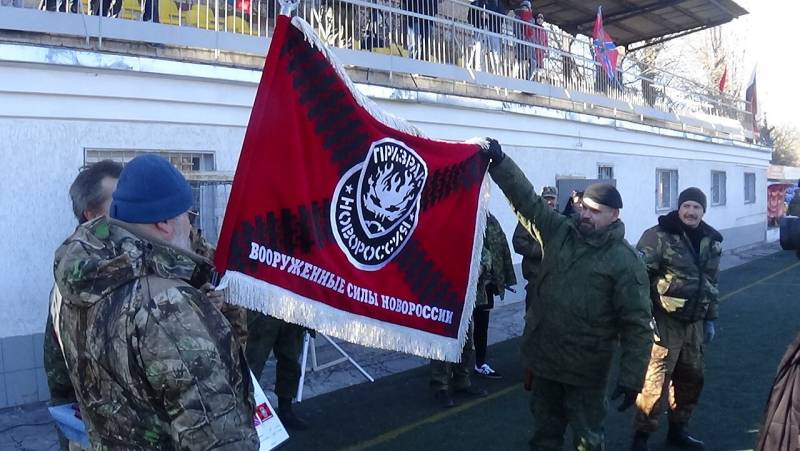
Today, Ukrainians don’t even have to strain themselves, training grounds are open for them all over Europe, where foreign instructors are happy to teach Ukrainians all the intricacies of modern combat.
On the Russian side, as many state, everything still remains at the level of the first months of the NMD with a bias towards assaults.
Depending on the previous actions, the assault is either in the form of an attack by open force, or in the form of a surprise attack.
In the first case, success is based on the superiority of the attacker's forces and on the preparation of an assault with artillery fire in order to weaken the defender's fire, destroy the fortifications occupied by him and thereby prepare the way for the assault columns.
The success of a surprise attack is based on the unpreparedness of the defenders, respectively, they try to carry out the attack at night or at dawn, unexpectedly for the defender, secretly approaching his location
Long definition, but nothing to be done. Here are the questions:
- And if the enemy is prepared and waiting?
- and what to do if there are no shells in the proper quantities?
Today it is clear that the “shell hunger”, which is present on both sides, is not a hindrance to the headquarters. Therefore, from Maryinka to Kremennaya, the infantry of the two armies exterminates itself in short attacks, often several times a day.
In general, the very definition of the term "assault" has changed a lot. If the old one meant a long preparation, including from a siege, then the modern one has the meaning of a head-on attack without any preparation at all.
But this leaves room for maneuvers in the headquarters. Did not work out? Yes, but this is an assault! Losses? Naturally, this is an assault!! Preparation? Why, it's an assault!!! You just need to repeat. And they repeat. To infinity and with the same success.
"Wagners" is separate. There they really initially prepare assault infantry (one of our regular readers shares microdoses of information there) and they prepare seriously. The 1st and 2nd Corps of the Republics had something similar, but the assault infantry of the LDNR had already become history. Approximately, as the personnel of the airmobile brigades of the Armed Forces of Ukraine, which live in the third or fourth formation.
In reality, if you look, then yes, the Ukrainian side has practically stopped the assault operations. Just nobody. And those who remained, they must be protected for future battles. And to teach, fortunately, there is no shortage of assistants.
Meanwhile, speaking of assault infantry as a whole subclass, it is worth noting that this is not just infantry in armor, which must go and knock the enemy out of the fortified area. These should be properly trained fighters who can operate both in the field and in urban conditions, with a wide range of weapons. That is, in addition to AK and RPG-7, such a fighter must be able to work with RShG-1 / RShG-2, RPO-A Shmel, AGS. This is the minimum.
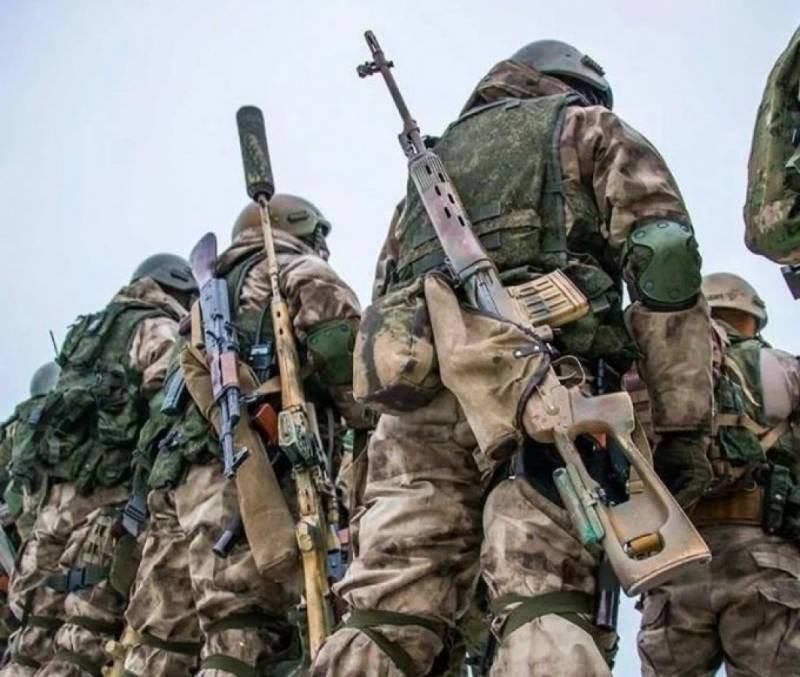
How many of you readers have heard about this level of training from mobilized acquaintances? The maximum preparation included shooting and throwing grenades. At least - shooting from a machine gun.
Therefore, the soldiers of the Armed Forces of Ukraine, who perfectly understand the essence of what is happening at the prompt from above, perfectly beat off dozens of assaults, in which unprepared and insufficiently armed fighters participate. However, the question of how Ukrainians will arrange their assaults and offensives is still up in the air. If only because there are no fundamental differences in the mass training of personnel among the warring parties.
The fact that a certain number of servicemen of the Armed Forces of Ukraine are being trained abroad will in no way affect the overall picture. Yes, the training of drivers for NATO equipment is a necessity, because there is a difference in technology. They need to be cooked. It is no less necessary to train both the commanders of the vehicles and the shooters-operators, but what can I say - it is necessary to train everyone.
But excuse me, there is no way to take the two millionth army of Ukraine to Spain or Great Britain to train there. It's clear. Of course, the chain training system, when one trained to train five and further along the chain ... This is good in peacetime, and not when everything is on fire in the truest sense of the word.
Several thousand trained will not help the Armed Forces of Ukraine in the offensive. No matter how well prepared the same commanders are, no matter how skillfully the fighter handles the machine gun, no matter how accurately he throws grenades - all this is nothing in the offensive, since bullets and grenades will also fly from that side. And a machine gun with grenades will not be able to compensate for the lack of heavy group infantry weapons and training to work with them.
communication
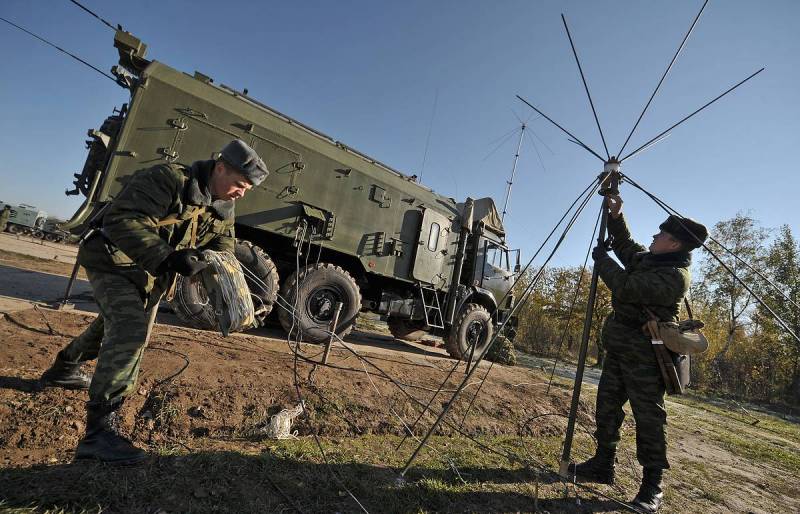
In general, this is the most important advantage of the Armed Forces of Ukraine over the Russian army. Not only did good specialists from Europe set up communications for the Ukrainians, they also supplied them with normal modern radio stations in decent quantities. This is perhaps a more serious advantage than the Highmars.
It is impossible to say that the Russian army does not have a closed communications system. She is. R-187P1 "Azart", which we will pay tribute to in the near future.
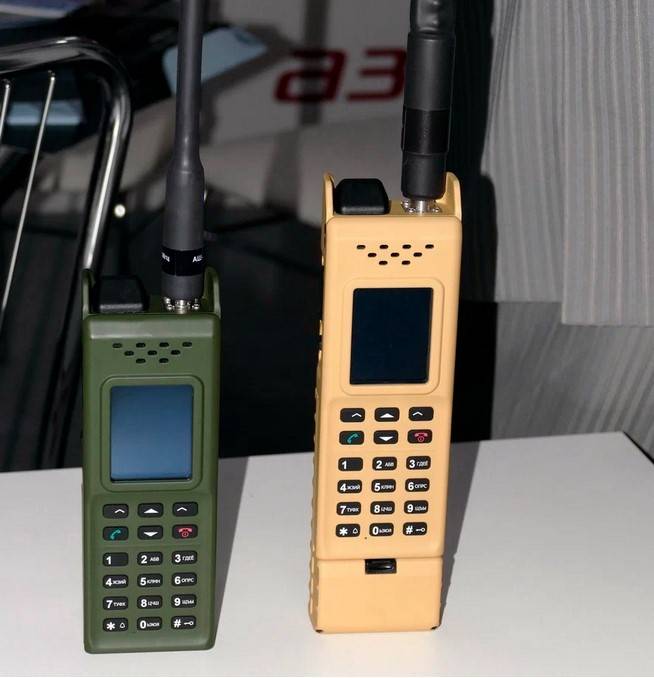
However, the presence of "Azart", of course, in limited quantities, does not solve communication problems, but rather exacerbates them, and here's why: the Russian army is saturated with Chinese civilian range radios. Yes, "Baofengami", which not only are tapped for "time", but also glow in the radio range, like Christmas trees. A find for a slave.
Here's an example, from my personal archive. By the antenna, you can immediately distinguish where the Azart is, its flat and long well, you can’t confuse it with anything, but you can see both Motorola and Baofeng with a reinforced antenna in the pictures.
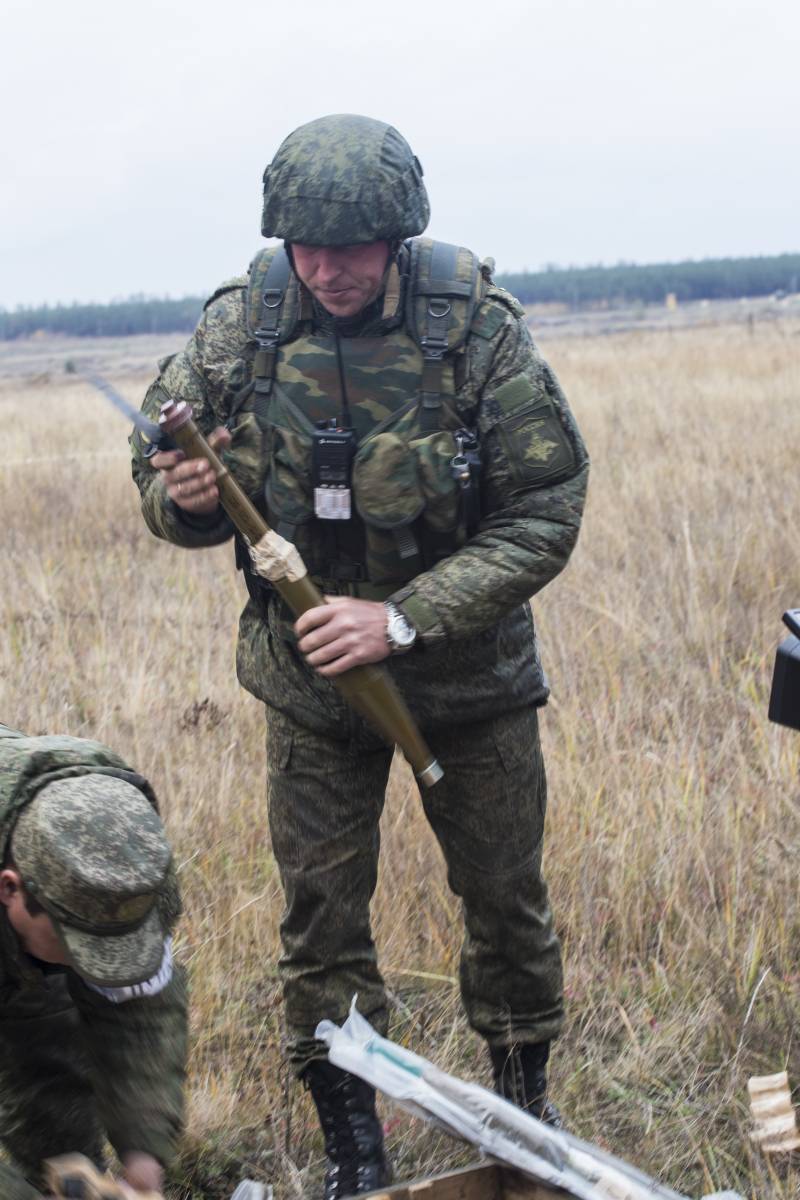
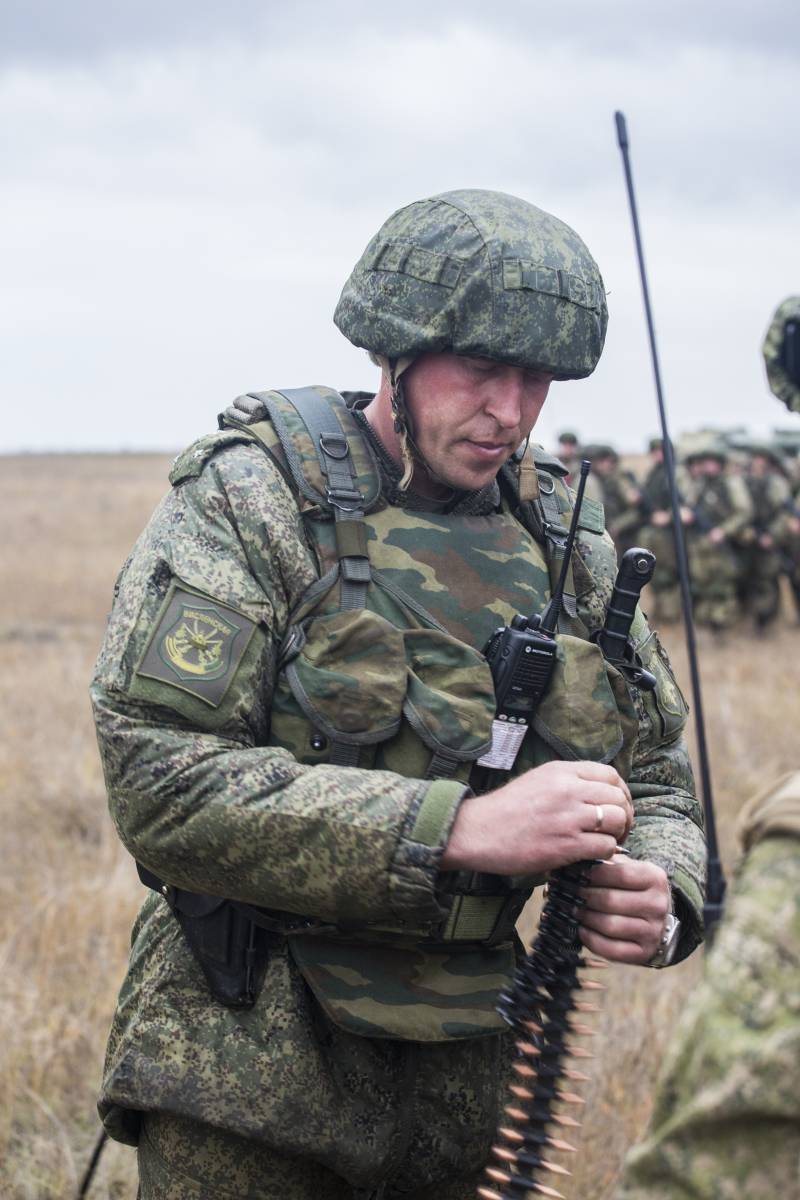
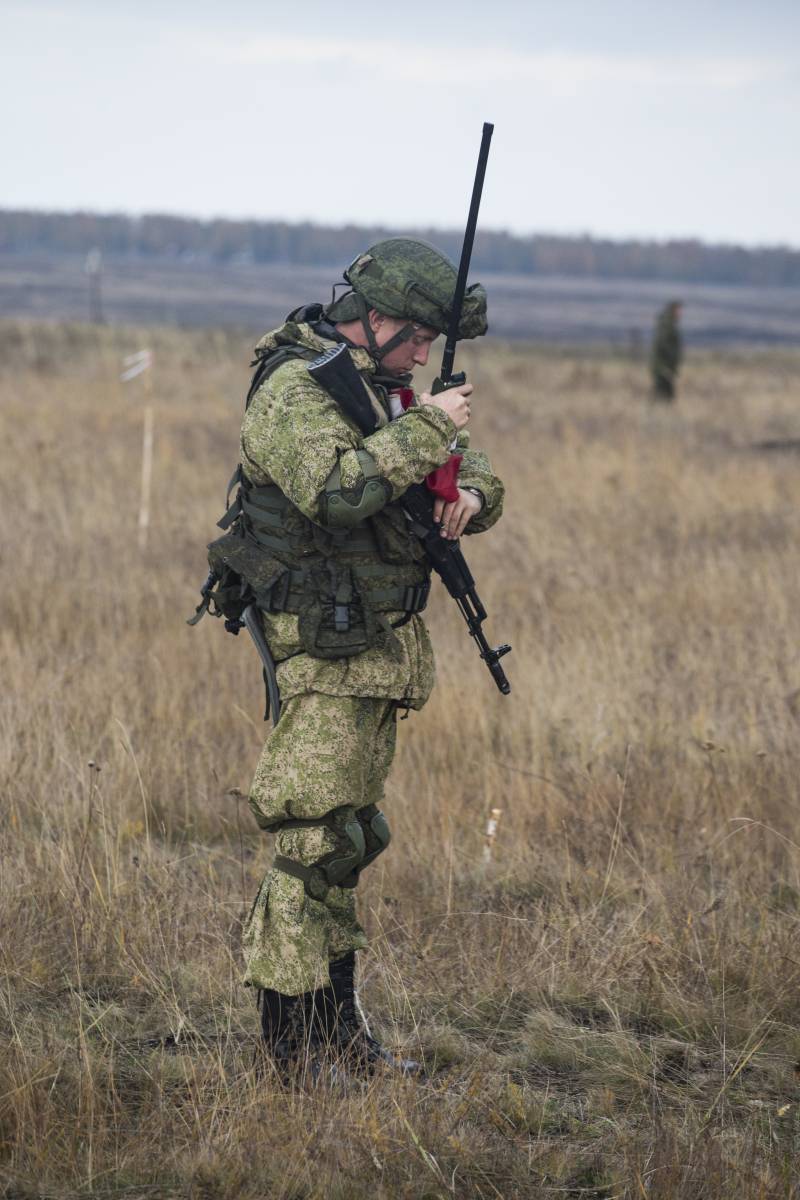
But since there was nothing else, then at least Fengy. But there is one more nuance here: the Russian equipment coming into the units as replenishment is not the one that "has no analogues in the world", and which "no worse than modern designs", mostly equipped with R-123 and R-173 radios.
These are wonderful radio stations, I would like to say a few words about them.
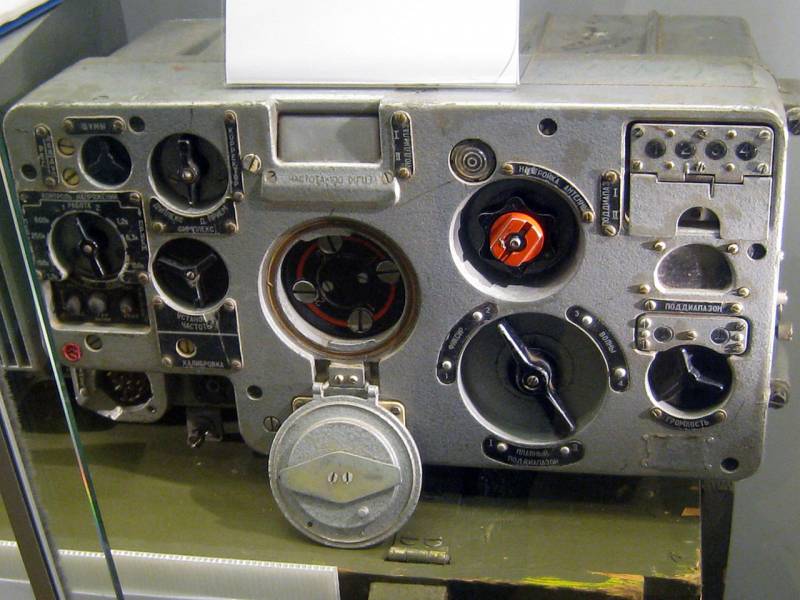
R-123 "Magnolia" was born in Voronezh. And this is where the production started. In 1960, the R-123 went into production. That is, the radio station is only 63 years old. P-173 "Paragraph" is not exactly a complete "paragraph", 12 years younger. But the main disadvantage is that they simply cannot connect with the very Chinese products that everyone speaks.
But in operation, these walkie-talkies simply yell all over the air: “Here is armor !!!”, because identifying them for a modern specialist is a piece of cake. And, accordingly, who needs to beacon about the fact that in such and such a square there are kagal armor. What's next, pulling up ATGMs or a visit drones are indeed aspects.
Do not take Ukrainians for idiots. Idiots were knocked out back in 2015. Now there are quite a large number of literate, and most importantly, those who want to survive and win, specialists. Well aware of where we have weak points and where, accordingly, it will be necessary to hit harder. As it was last summer, when mobile groups on light wheels literally swept away barriers, clearing the way tanks and infantry.
In general, if you look at what they write on Ukrainian channels such as "Insider", "Real War" or "Informant of Ukraine", you can get some valuable information. They also look at us and discuss our strengths and weaknesses.
And on the other side they are well aware that in terms of communication they are far superior to us. And the situation is that the Russian army will continue to fight as it did in 2022, with partially manned troops, with a minimum level of training for privates and sergeants, and the control of these troops will be difficult as for purely technical reasons related to the equipment of communications.
Moreover, many express "deep satisfaction" with the assaults, which, according to the Ukrainian side, are fighting back with huge losses for the Russian side. And the highlight is that just as long as the territorial defense units are holding positions in Artemovsk / Bakhmut, the command of the Armed Forces of Ukraine is withdrawing its combat-ready forces from the potential boiler, understaffing and retraining entire brigades in the rear at the expense of those who have been trained abroad.
So, of course, everything looks quite effective and plausible, but here's how much time it will take - alas, they don't discuss it here. But it is clear that just as the Minsk agreements bought Ukraine time to create the Armed Forces of Ukraine, so the defense of Artemovsk buys time to create new brigades.
The main danger of the Armed Forces of Ukraine
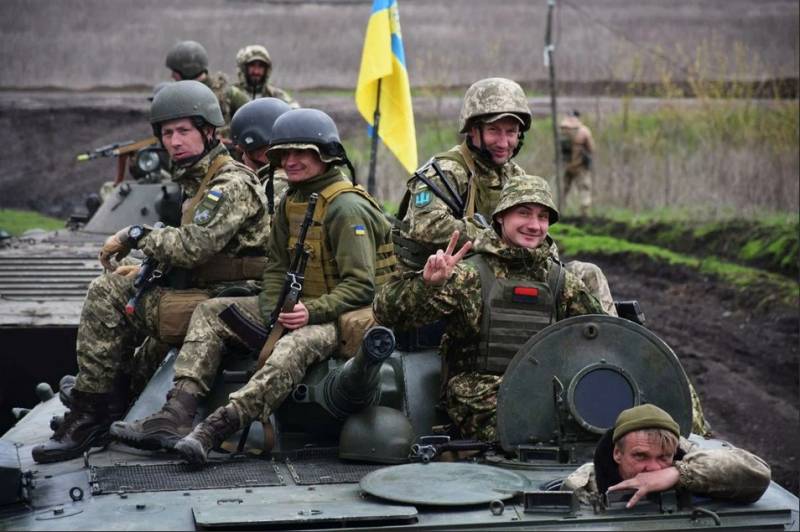
The fact that Ukrainians are given NATO equipment is not as scary as it seems. All the same, its quantity is limited, and superiority is not guaranteed.
The main danger is that Ukrainian commanders who have received combat experience are learning to fight in a completely different war, not the model of the First World War. A different pace of operations, a different flow of information, a different, freer level of decision-making. Multiplied by the huge amount of timely information about the enemy - this is the key to success, which they rely on on the other side. And not without reason.
And these structures (what's there - just headquarters) will work faster than Russian ones by several levels. As long as we have approvals and requests for permission to open fire, the Armed Forces of Ukraine will do their job. This is more dangerous than all the "Leopards" and "Abrams" combined.
I read here among our z-patriots, who will never end up in the trenches, because their front line is at home, behind the keyboard, how cheerfully the Abrams from our RPG-7s will burn, and I realized how sad everything is. Because I doubt they will burn. The grenade launchers will be looked out for by drones and drop mines and grenades on them, so those will not be up to tanks. Actually, as it is already happening.
And yes, our enemy is well aware that his advantage is provided not by technology and its performance characteristics, but by the speed and quality of control. And here you have detours and coverage of our forces, and a difficult choice for Russian fighters between retreat and fighting in the environment. The point is that, thanks to advanced control and communication systems, the enemy will be in a better position on the battlefield than our forces.
In short, Raisins 2.0.
I would like everything to be different, but it is not clear that we have at least some movement towards improvement. Well, except for the adoption of the law on deviators.
Postscript: I paid a lot of attention to communication. Therefore, I will leave artillery and aviation for next time.
Information